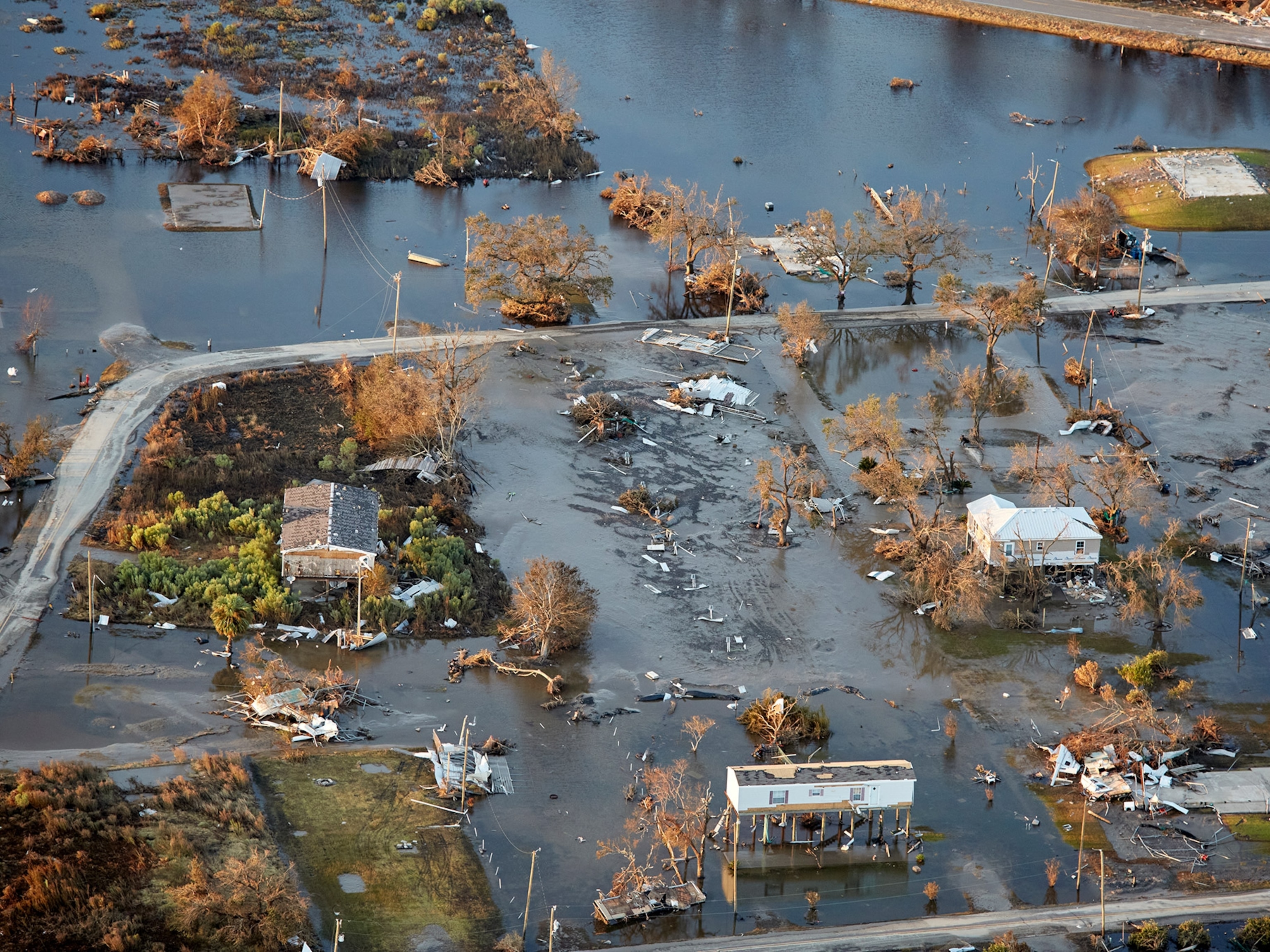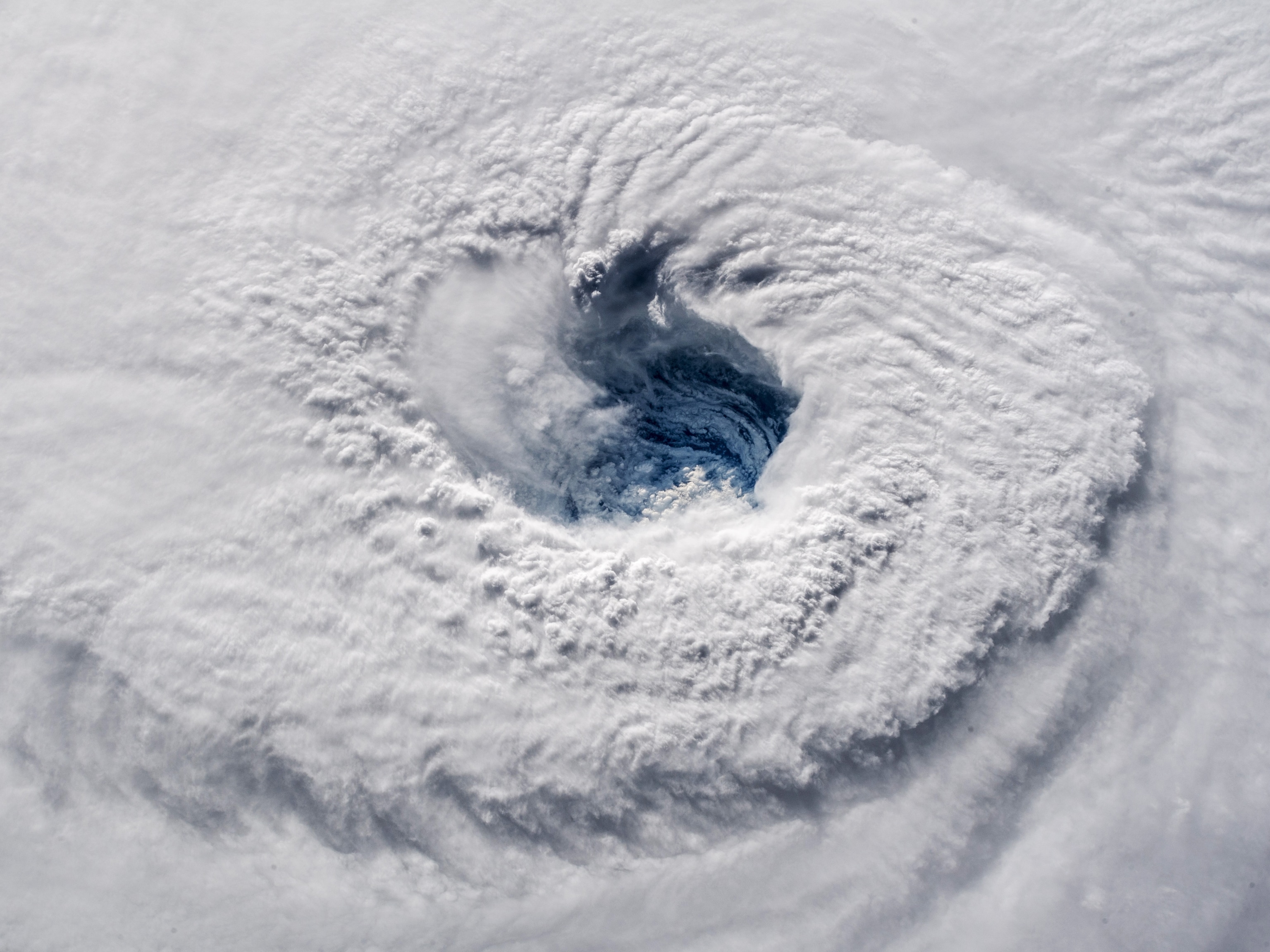Why Hurricane Harvey May Be Deadlier Than Other Storms
Several factors may combine and lead to a serious disaster. Here's what the science says.
Hurricane Harvey has become an emergency management director’s nightmare.
The hurricane, which is the most serious storm to make landfall in the U.S. since Hurricane Wilma in 2005, combined rapid intensification with a deluge of rainfall that is expected to make it a catastrophic event for Texas. Harvey’s eye came ashore late Friday near Rockport, Texas, about 35 miles northeast of Corpus Christi.
The storm began gathering strength as it approached the Texas coast Thursday and Friday. At 8 a.m. Eastern Daylight time Thursday, the hurricane’s top winds were 60 mph. By 8 a.m. Friday, Harvey’s top winds had exploded to 110 mph. And by 2 p.m. Eastern time its top winds had reached 120 mph. That threshold made Harvey a Category 3 major hurricane on the Saffir-Simpson scale, meaning that its winds can do devastating damage.
On Friday evening, the storm was upgraded to a Category 4, with winds that can exceed 130 mph. As predicted the storm made landfall at that strength. By Saturday morning it was downgraded to a Category 1 storm, although serious risk of flooding remains given heavy rains and storm surges.
Meteorologists are still trying to unlock the secrets that cause a hurricane to rapidly intensify, says meteorologist Jeff Masters, founder of the website Weather Underground. (Learn about recent advances in hurricane forecasting and science.) Three of the most powerful hurricanes on record—Hurricane Charley in 2004, Andrew in 1992, and the Labor Day Hurricane of 1935—underwent similar rapid intensification as they were coming ashore. All of these hurricanes destroyed or inflicted massive damage to everything in front of them.
Hurricanes draw their energy from seawater that has been heated to at least 80 degrees Fahrenheit. A hurricane’s development can be impeded by the presence of upper-level winds—known as wind shear—that disrupt the storm’s circulation and cause it to lose strength. (Learn more about how hurricanes form.)
Masters said in a blog post today that Hurricane Harvey had been over very warm water—at least 85 degrees Fahrenheit—for more than six hours earlier today. And the storm is was not bothered by wind shear. Masters said these factors fueled Harvey’s rapid intensification.
Although all hurricanes bring heavy rainfall with them, Masters said that it’s unusual for a storm with winds as powerful as Harvey’s to bring an inundation of rainfall. But the National Hurricane Center in Miami said the storm could bring as much as 25 inches of rainfall to inland Texas through Wednesday. The combination of high winds, prolonged saturating rainfall, and tumbling trees is likely to bring down many power lines.
See photos of extreme weather
Texans’ misery is likely to be compounded by Hurricane Harvey’s slow, ambling trip inland. Hurricanes often pick up speed once they’ve touched land and move inland at a much quicker pace. But Harvey is expected to linger, moving at only a few miles an hour for the next several days and prolonging its infliction of damage well into next week.
The flooding damage will be compounded by Hurricane Harvey’s storm surge, a mound of water piled up by the storm’s winds and pushed onto land as it approaches and makes landfall. Masters noted that Harvey’s storm surge could push “enormous amounts of water from several directions into Galveston Bay and the Houston Ship Channel. The result could be widespread, possibly unprecedented flooding early next week across southeastern parts of the Houston metropolitan area along and near the bay and the ship channel.”
The Texas Gulf Coast is punctuated with lots of developed infrastructure, from housing to roads and bridges and a robust network of petrochemical plants, refineries, and other heavy industry. Environmentalists have warned that damage to this infrastructure could result in leaks of oil or toxic chemicals.
Experts have also warned that more than a century of developing land, particularly at water’s edge, has removed or degraded many of the natural wetlands and barrier islands that once helped to dampen the surges of water and wind brought by hurricanes. Pipelines and canals that criss-cross the landscape can help funnel water more quickly inland, leading to more destruction.
This story was updated at 10:40 am ET August 26.
Listen to IPPY Award-winning author Willie Drye talk about his latest book, For Sale—American Paradise: How Our Nation Was Sold An Impossible Dream In Florida, on NPR affiliates WUNC, Chapel Hill and WLRN, Miami. Visit his blog, Drye Goods, now in its 10th year. Follow him on Facebook
To support victims of Harvey, consider giving to United Way of Greater Houston.

















